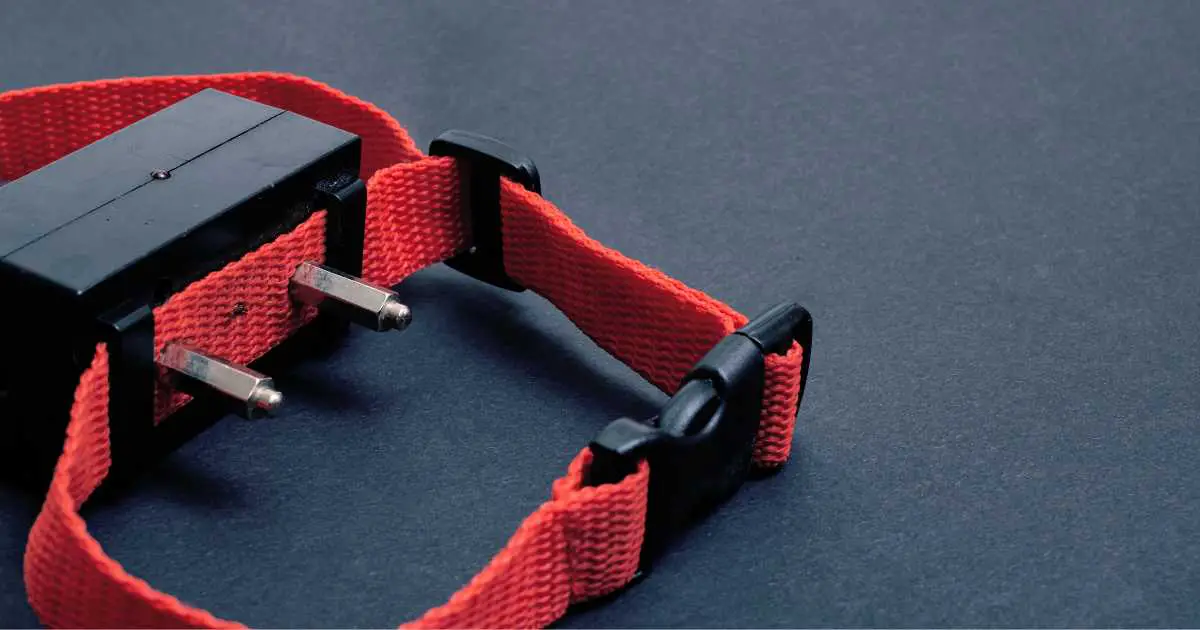Dogs are among the most obedient and loyal pets a person can have. But just like any animal, dogs must be trained. You can’t just let your dog run around chewing your sofa, biting your feet, scratching things, and creating a mess. On those days when your dog just won’t listen, you may be racking your brain thinking of ways to get them to follow your commands.
An Electronic collar — or E-collar — might be the right training tool for you. It has been gaining popularity among dog trainers to remove undesirable behavior in dogs. It also works in case a verbal command is an insufficient stimulus for your dog to obey.
E-collar training has been a controversial topic regarding animal welfare. That is why it is important to do extensive research about E-collars before deciding to use them. But what is an e-collar for dogs? And how should you use them? We have answers to these questions and more below. So keep reading!
What Is an E-Collar for Dogs?

An electronic collar or shock collar is a collar for remote-controlled dogs. The collar comes attached with a metal transmitter that sends electric shocks to the dog when the owner presses a button on the remote. Depending on the model, the remote can send signals a few miles apart.
It is worn like a normal dog collar around the dog’s neck. The intensity of the shock is normally adjusted to the lowest level for safety. E-collars can be used for training as well as tracking your dog.
Initially, E-collars were not safe enough for dogs since the lowest setting was too painful. Modern E-collars are different in that they have hundreds of settings. The use depends on the temperament of the dog, and the highest setting is kept only for emergencies.
How Does an E-Collar Work?
E-collar training uses electric stimulation of varying degrees intended to deter negative behaviors. The shock is sent to the neck of the dog via remote control. Despite the startling sensation and brief discomfort, the dog is not harmed. The sensation from the collar’s stimulus helps the dog to refocus his attention.
The use of this training device depends on the owner. Some use the principle of punishment for dogs as part of their training. When a certain negative behavior is displayed, the owner will shock the dog to get them to stop.
Otherwise, we can use positive reinforcement training. When behavior is corrected, a reward is given instead. This remote training collar has its positives and negatives depending on the intentions of the user.
Are E-Collars Safe?
The safety of remote training collars poses concerns to many dog owners. Since the shock collar has electric properties, it could pose ethical issues in the wrong hands. Mistreatment of dogs with these devices is an important topic of worry.
Additionally, the collar might malfunction and cause injury to your dog. If used by amateurs without proper training, the dog can be left with psychological stress from repeated shocks. Even though modern shock collars are safer, we cannot rule out human cruelty toward animals.
Moreover, it has been reported that positive reinforcement training worked better than E-collar training which uses negative association.
Most people consult a professional trainer before using this type of collar. The professional will always test the collar on themselves first. You might be surprised how close it feels to physiotherapy or acupuncture. The collar comes with adjustable levels to provide different levels of stimulation to your dog.
Some people are also concerned with rashes or hair loss that the electric transmitter box attached to the collar may cause. But that is not a concern for the new electric collar design since they come in a wide variety of sizes
According to experts, the rash or hair loss is from the pressure of the transmitter box rather than any heat it gives out. It just needs to be in a new place every time you put on the collar
Pros of Using an E-Collar

- Another method of communication with your dog: You can increase the urgency of a command with a gentle pulse to your dog in an unsafe situation.
- Provides timely correction of behavior: You can correct unwanted behavior the moment it happens. It helps when training to go off-leash.
- Less strain of training on the pet parent in a limited time: When commands are learned promptly, it takes less time and effort to train your dog. It also improves the overall experience with your pet.
- Train your dog against unwanted barking at random strangers: Let the mailman do his job without your dog jumping at him. A little shock can help train the dog against excessive barking. Also, you can train against jumping on guests in your home.
Cons of Shock Collars
Even though marketing seems to use the phrase E-collar instead of shock-collar these days, sadly the concept remains the same. The collar allows dogs to associate discomfort with bad behaviors, but what do we consider bad behavior?
When training your dog, you might use the collar, but since you’ve been using it previously for warnings the dog might get confused with his actions. It will cause him anxiety and stress.
Another disadvantage is that not anybody should start using this collar in an aversive training method without professional training, but many do. Without proper technique, your dog might grow fearful of some normal actions unrelated to the problem behavior. Your presence could cause them anxiety, leading to more aggressive behavior towards you.
Static shock also causes unnecessary pain to the dog, which is unethical.
Instead of the E-collar, the best method of training your furry friend is positive reinforcement. This is when positive behavior is rewarded with treats, hugs, or pats. Positive reinforcement training methods are known to strengthen bonds between the pet and the parent. It also increases the need for the pet to display positive behavior
Frequently Asked Questions
Are E-Collars Recommended By Vets?
No, vets will almost always recommend using positive reinforcement training over aversive training to prevent negative impacts on the well-being of the animal. Behavior modification should be conducted gently and carefully.
When Can I Use E-Collar On My Dog?
If you must, then let the puppy reach 6 months of age. Teach the puppy basic commands before training with E-collar technology.
Can an E-Collar Injure Dogs?
If extremely intense shock is given to the dog, it could injure him. There may be burns on the skin from the shock and psychological damage to the dog as well. So yes, an e-collar can injure your dog, and you should only use one as a last resort.
Conclusion
Now that we’ve answered the question, “what is an e-collar for dogs?” we can decide if it is right for us or not.
We train our children to be on their best behaviors with love and dedication. Our dogs deserve the same treatment. To many people, dogs are the most beloved pets — although training a dog could be a lengthy commitment. Even then, no matter what issues your dog has, you must carry on.
Even when you think of getting a shock collar for them, you must think about the adverse effects this option for dogs could have. Only as a last measure should E-collars be considered. We cannot stress this enough. They must be used with the responsibility to ensure the happiness of your pets.
